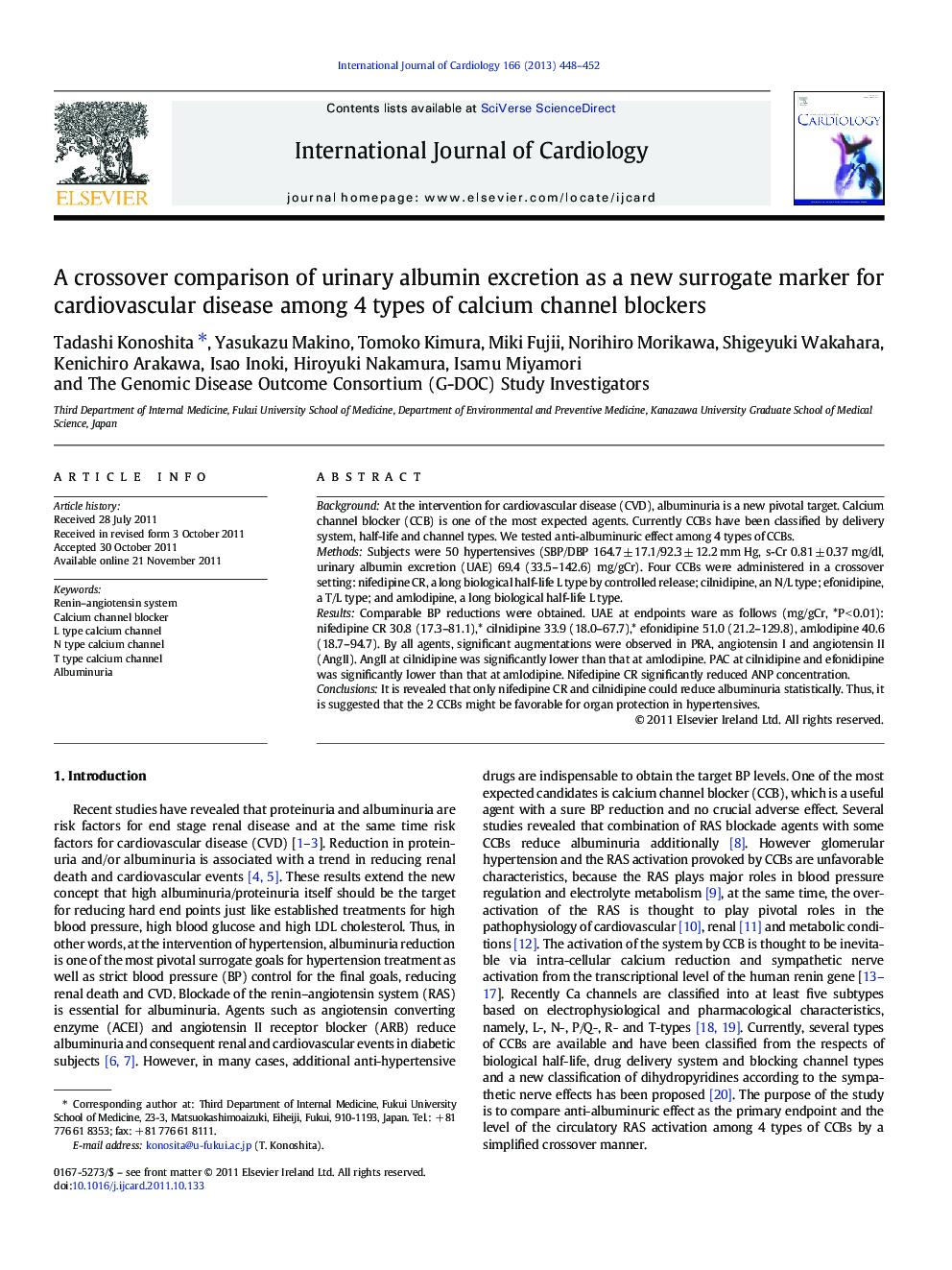| Article ID | Journal | Published Year | Pages | File Type |
|---|---|---|---|---|
| 5976406 | International Journal of Cardiology | 2013 | 5 Pages |
BackgroundAt the intervention for cardiovascular disease (CVD), albuminuria is a new pivotal target. Calcium channel blocker (CCB) is one of the most expected agents. Currently CCBs have been classified by delivery system, half-life and channel types. We tested anti-albuminuric effect among 4 types of CCBs.MethodsSubjects were 50 hypertensives (SBP/DBP 164.7 ± 17.1/92.3 ± 12.2 mm Hg, s-Cr 0.81 ± 0.37 mg/dl, urinary albumin excretion (UAE) 69.4 (33.5-142.6) mg/gCr). Four CCBs were administered in a crossover setting: nifedipine CR, a long biological half-life L type by controlled release; cilnidipine, an N/L type; efonidipine, a T/L type; and amlodipine, a long biological half-life L type.ResultsComparable BP reductions were obtained. UAE at endpoints ware as follows (mg/gCr, *P < 0.01): nifedipine CR 30.8 (17.3-81.1),* cilnidipine 33.9 (18.0-67.7),* efonidipine 51.0 (21.2-129.8), amlodipine 40.6 (18.7-94.7). By all agents, significant augmentations were observed in PRA, angiotensin I and angiotensin II (AngII). AngII at cilnidipine was significantly lower than that at amlodipine. PAC at cilnidipine and efonidipine was significantly lower than that at amlodipine. Nifedipine CR significantly reduced ANP concentration.ConclusionsIt is revealed that only nifedipine CR and cilnidipine could reduce albuminuria statistically. Thus, it is suggested that the 2 CCBs might be favorable for organ protection in hypertensives.
